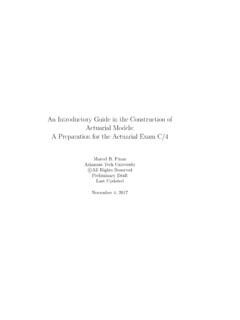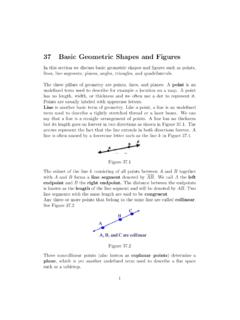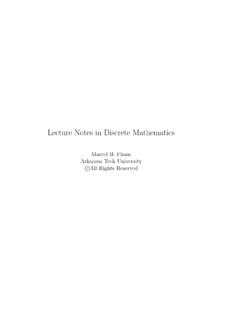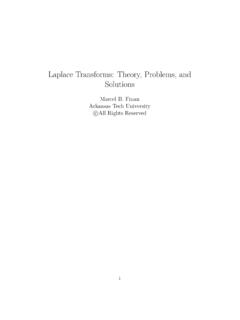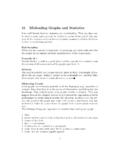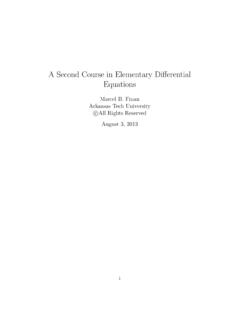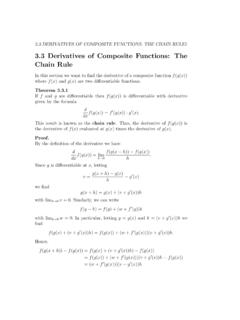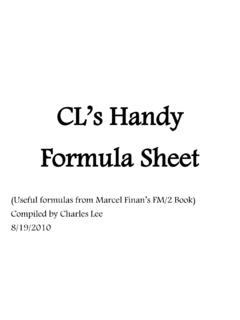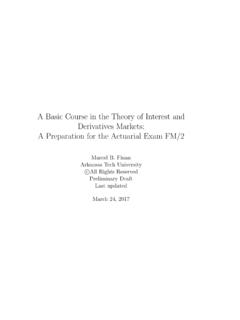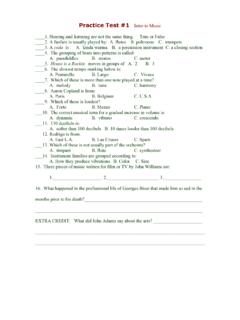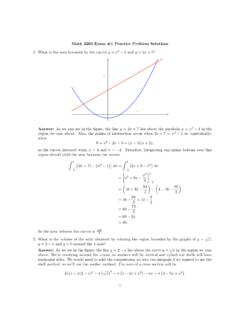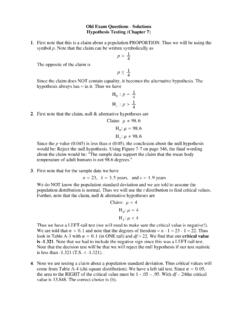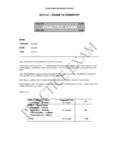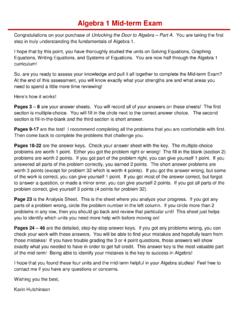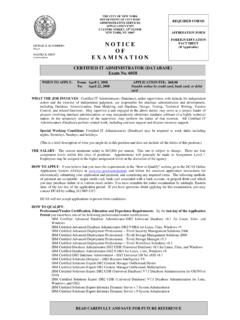Transcription of Lecture Notes in Actuarial Mathematics A Probability ...
1 Lecture Notes in Actuarial Mathematics A Probability course for the actuaries A Preparation for exam P/1. Marcel B. Finan May 2018 Syllabus In memory of my parents August 1, 2008. January 7, 2009. Preface The present manuscript is designed mainly to help students prepare for the Probability Exam (known as Exam P/1), the first Actuarial examination ad- ministered by the Society of actuaries . This examination tests a student's knowledge of the fundamental Probability tools for quantitatively assessing risk. A thorough command of calculus is assumed.
2 More information about the exam can be found on the webpage of the Soci- ety of actuaries Problems taken from previous exams provided by the Society of actuaries will be indicated by the symbol . This manuscript can be used for personal use or class use, but not for com- mercial purposes. If you find any errors, I would appreciate hearing from you: This manuscript is also suitable for a one semester course in an undergradu- ate course in Probability theory. Answer keys to text problems are found at the end of the book. Marcel B. Finan Russellville, AR.
3 May, 2017. i ii PREFACE. Contents Preface i Set Theory Prerequisite 5. 1 Some Basic Definitions .. 6. 2 Set Operations .. 16. Counting and Combinatorics 31. 3 The Fundamental Principle of Counting .. 31. 4 Permutations .. 38. 5 Combinations .. 44. Probability : Definitions and Properties 55. 6 Sample Space, Events, Probability Measure .. 55. 7 Probability of Intersection, Union, and Complementary Event .. 67. 8 Probability and Counting Techniques .. 78. Conditional Probability and Independence 87. 9 Conditional Probabilities .. 87.
4 10 Posterior Probabilities: Bayes' Formula .. 97. 11 Independent Events .. 110. 12 Odds and Conditional Probability .. 121. Discrete Random Variables 125. 13 Random Variables .. 125. 14 Probability Mass Function and Cumulative Distribution Function133. 15 Expected Value of a Discrete Random Variable .. 143. 16 Expected Value of a Function of a Discrete Random Variable .. 153. 17 Variance and Standard Deviation of a Discrete Random Variable 162. 1. 2 CONTENTS. Commonly Used Discrete Random Variables 171. 18 Uniform Discrete Random Variable.
5 171. 19 Bernoulli Trials and Binomial Distributions .. 177. 20 The Expected Value and Variance of the Binomial Distribution . 185. 21 Poisson Random Variable .. 194. 22 Geometric Random Variable .. 207. 23 Negative Binomial Random Variable .. 216. 24 Hyper-geometric Random Variable .. 224. Cumulative and Survival Distribution Functions 233. 25 The Cumulative Distribution Function .. 233. 26 The Survival Distribution Function .. 248. Calculus Prerequisite I 255. 27 Improper Integrals .. 255. Continuous Random Variables 267. 28 Distribution Functions.
6 267. 29 Expectation and Variance .. 282. 30 Median, Mode, and Percentiles .. 296. 31 The Continuous Uniform Distribution Function .. 304. 32 Normal Random Variables .. 312. 33 The Normal Approximation to the Binomial Distribution .. 323. 34 Exponential Random Variables .. 328. 35 Gamma Distribution .. 338. 36 The Distribution of a Function of a Continuous Random Variable 345. Calculus Prerequisite II 353. 37 Graphing Systems of Inequalities in Two Variables .. 353. 38 Iterated Double Integrals .. 359. Joint Distributions 369. 39 Jointly Distributed Random Variables.
7 369. 40 Independent Random Variables .. 385. 41 Sum of Two Independent Random Variables: Discrete Case .. 398. 42 Sum of Two Independent Random Variables: Continuous Case . 405. 43 Conditional Distributions: Discrete Case .. 415. 44 Conditional Distributions: Continuous Case .. 425. CONTENTS 3. 45 Joint Probability Distributions of Functions of Random Variables 435. Properties of Expectation 443. 46 Expected Value of a Function of Two Random Variables .. 443. 47 Covariance and Variance of Sums .. 456. 48 The Coefficient of Correlation.
8 464. 49 Conditional Expectation .. 471. 50 Double Expectation .. 480. 51 Conditional Variance .. 490. Moment Generating Functions and the Central Limit Theorem499. 52 Moment Generating Functions .. 499. 53 Moment Generating Functions of Sums of Independent RVs .. 507. 54 The Central Limit Theorem .. 517. Sample Exam 1 525. Sample Exam 2 539. Sample Exam 3 555. Sample Exam 4 569. Sample Exam 5 583. Sample Exam 6 597. Sample Exam 7 611. Sample Exam 8 625. Sample Exam 9 639. Sample Exam 10 653. Answer Keys 669. Bibliography 757. Index 759.
9 4 CONTENTS. Set Theory Prerequisite Two approaches of the concept of Probability will be introduced later in the book: The classical Probability and the experimental Probability . The former approach is developed using the foundation of set theory, and a quick review of the theory is in order. Readers familiar with the basics of set theory such as set builder notation, Venn diagrams, and the basic operations on sets, (unions, intersections, and complements) can skip this chapter. However, going through the content of this chapter will provide a good start on what we will need right away from set theory.
10 Set is the most basic term in Mathematics . Some synonyms of a set are class or collection. In this chapter, we introduce the concept of a set and its various operations and then study the properties of these operations. Throughout this book, we assume that the reader is familiar with the fol- lowing number systems and the algebraic operations and properties of such systems: The set of all positive integers N = {1, 2, 3, }. The set of all integers Z = { , 3, 2, 1, 0, 1, 2, 3, }. The set of all rational numbers a Q = { : a, b Z with b 6= 0}.
